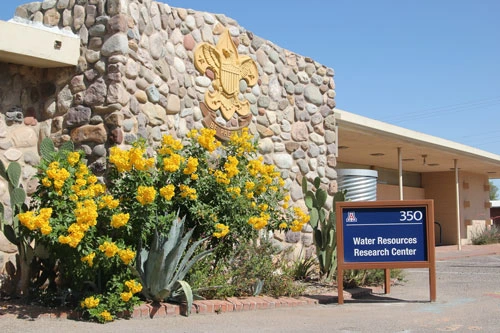Public Policy Review

I devote one column a year to providing an update on developments at the Water Resources Research Center. The end of the fiscal year provides a suitable occasion, so here I go.
The WRRC is like most other organizations, with things at times remaining the same and at other times rapidly changing. WRRC acquired new staff, with Susanna Eden joining us in November as an applied research coordinator. A University of Arizona Hydrology and Water Resources Department graduate who was previously with WRRC, Susanna worked on a chapter on water and growth for the spring 2006 Arizona Town Hall background report. She is heading the WRRC collaborative effort with the Water Education Foundation to develop an Arizona volume for WEF’s “Layperson’s Guide” series. The “Layperson’s Guide to Arizona Water” is scheduled for completion spring 2007.
Among her many other responsibilities, she is working with me on a report on artificial recharge to be issued as part of our Arroyo series. Predating our bi-monthly newsletter, Arroyo reports indepth on a single issue. Its regular publication disrupted by resource constraints, Arroyo will get a new life with the publication of the recharge issue.
Carl Bauer will become WRRC associate director this fall, with a joint appointment as professor of geography and regional development. His multi-disciplinary background and work on international water will enhance WRRC’s policy work. Kerry Schwartz, who has guided Arizona Project WET (Water Education for Teachers) through much expansion, has been appointed associate specialist, a faculty position providing expanded opportunities for professional and programmatic growth. Arizona Department of Environmental Quality funding supported Kristine Uhlman who, working with UA Professor Phil Guertin, developed Project NEMO (Nonpoint Education for Municipal Officials). Her appointment this fall as area assistant agent with Extension will provide her faculty status, with an affiliation with both WRRC and Pima County Cooperative Extension. Kristine’s work focuses on watershed characterization and mapping.
Kathy Jacobs’ appointment as executive director of the Arizona Water Institute, a cooperative venture of the three state universities, has reduced her WRRC commitment. WRRC’s collaboration with AWI, however, keeps us working together.
The Arizona Board of Regents’ approval of the business plan for the Water Sustainability Program, a project funded by the Technology Research Initiative Fund, enables WRRC to continue its work with UA water centers, faculty and staff on water research, education and outreach that address Arizona water issues. WRRC’s Jackie Moxley continues to coordinate this program, its key components including competitive grants, student fellowships, and recruitment and research initiatives. We are pleased about the program’s five-year renewal. (See supplement included within this newsletter for description of new WSP-sponsored projects and list of students who were awarded fellowships.)
We continue to take on varied types of programs, including Terry Sprouse’s work on water issues in the Ambos Nogales area and water harvesting. Our newsletter, the Arizona Water Resource, continues to garner praise, particularly features written by editor Joe Gelt.
My position as WRRC director took me to Washington, DC to request continuation of U.S. Geological Survey 104B grants program funding. A small program by federal standards, 104B is nevertheless important to water centers across the country. We are optimistic its funding will be restored. Also I journeyed to the capitol to present testimony to the Water and Power Subcommittee of the U.S. House of Representatives Resources Committee, in support of the “United States-Mexico Transboundary Aquifer Assessment Act” (S 214 and HR 469) which would authorize a study of shared aquifers with Mexico.
The wide interest and participation that our annual conference attracts testifies to its value as a forum to discuss water resource issues crucial to our state’s economic vitality. (See page 9 for some highlights of this year’s well-attended WRRC conference, “Providing Water to Arizona’s Growing Population: How Will We Meet the Obligation?”) On a smaller scale, our brown bag seminar series continues to provide opportunities for information sharing and discussion, bringing together university personnel and community members.
We engaged in some program soul searching and came up with a streamlined mission statement that is prominently displayed in the sidebar.
Those visiting our Sol Resnik conference room, whether for a brown bag session, a community or university meeting or a class, will note recent improvements, thanks to the generosity of Salt River Project and Central Arizona Project.
For more information about WRRC projects and programs check www.cals.arizona.edu/azwater/ (By the way, this too is to become better: our web site is to be redesigned for easier navigation and update.) A colorful new WRRC brochure has been developed and is available for distribution.
We are constantly striving to improve, and we thank you for your support and continued involvement in WRRC-related programs and projects.

